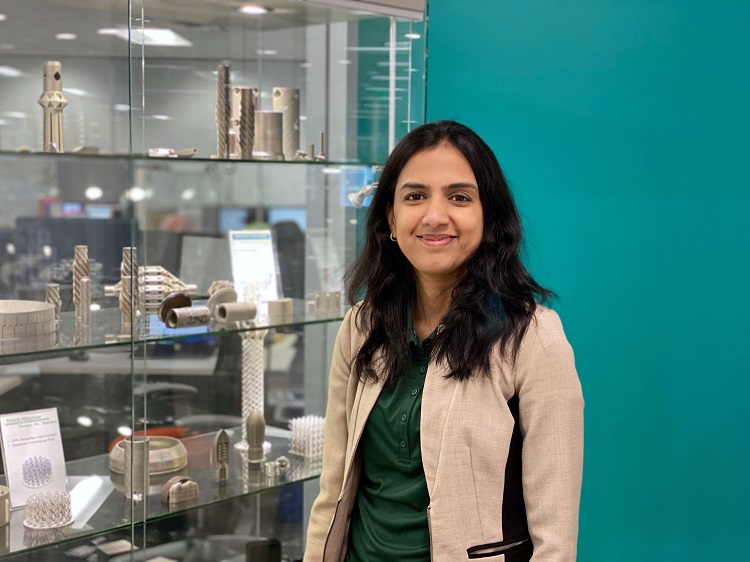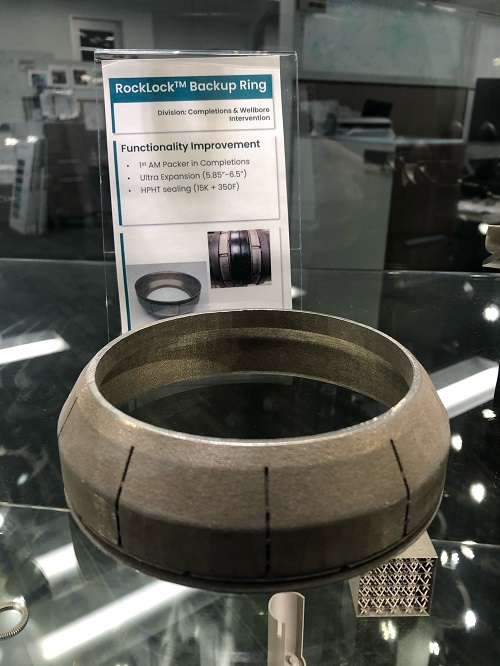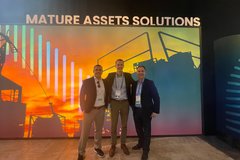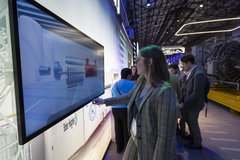
Late in 2019, Anjani Achanta was made executive director of the Baker Hughes Additive Manufacturing Technology Center in Houston. It’s known in short as the AMTC and one of the company’s three such centers around the world where engineers and scientists with a broad range of expertise are immersed in a world of fast-moving innovation as they work to shift the manufacturing paradigm beyond anything they could have imagined just a few years ago.
Can you share with us the way your team works and what you’re doing at the Houston AMTC?
Our scope is to provide business solutions to solve problems for our internal product companies – all by developing additive manufacturing solutions. Research activities that support operations are led by my peer collocated with my team for maximum collaboration. Let’s understand each function in a little more detail.
The business development and order fulfillment team focuses primarily on finding the right opportunities to pursue for AMTC to deliver additive-only enabled products. The engineering group at the center is focusing on delivering viable designs taking into account unique process and material challenges posed by additive.
They use advanced design engineering software, modeling and simulation tools to leverage unique benefits offered by additive process such as complex 1-piece designs, weight reduction and unique geometries not possible without additive technology. There is innovation happening on product designs, process efficiency, and printing strategies not possible with just machines on hand. I call it “Intelligent 3D Printing”. The challenge they face daily is that there aren’t many industry standards or guidelines that are defined well enough to accelerate qualification and acceptance of their products.
In addition, multiple processes within metal and non-metal need to be understood thoroughly to select the right process for the application and the product needs to be carefully designed within the constraints of each process and its limitation. Our process engineers are making sure that the machines can reliably complete jobs and the processes are repeatable, and that product integrity is maintained across different machines and processes.
This requires expertise that does not exist in many industries or companies. Of the 7 additive processes as defined by ASTM, our center has machines capable of 5 of those processes. From printing electronics, to rapid prototyping to complex metal parts for field use and the increasing size of these components, the center here has it all.
As an example, we have a process called Directed Energy Deposition which is now able to build and repair parts additively, apply multiple materials, simplify several steps to one and incorporate post machining of additive parts, all in a single machine allowing a single set-up. This provides process simplification, eliminates human error and offers a product replenishment lead time not possible any other way.
We are applying advanced sensing technologies within 3D printers and also adding inspection equipment such as CT scanning at AMTC.
How many different parts has your center designed so far?
Over the last 4 years, as a company, we have qualified a few hundred individual parts globally for additive – that’s a significant number and these are validated by our customers. Many more parts were designed and iterated before final part qualification.
These parts range from prototype tools to end-use products, to field replacements. We have printed more than 20000 parts in 2019. And we’ve also produced parts in emergencies to reduce non-productive time in field thus avoiding significant operations costs for our customers.
What are the biggest advantages of additive for customers?
As I mentioned, saving customers non-productive time by delivering additive parts in time is one example.
We are also driving product innovation where the enhanced product functionality could only be achieved through additive manufacturing. A recent additive part developed for a major client is the RockLock (TM) backup ring – this additive design permits a packer expansion range that is not possible with traditionally manufactured backup rings. In most cases, there are reliability and life cycle costs savings for most additively produced components that our customers would welcome.

In addition, customers can leverage the capability offered by additive to hold virtual inventory significantly reducing costs, this model also allows a flexible supply chain that can leverage global network of additive part suppliers.
And finally, this transformational manufacturing technology is another tool in our industry to lead the energy transition towards a lower carbon footprint where suitable.
What does the future of additive manufacturing look like?
Imagine a scenario where we are prepared to supply a part which we know has reached the end of its life cycle before it fails without downtime and wait time in the field. It’s all about flexibility.
We are creating an ecosystem around additive technology, where a product needed in one part of the world can leverage technology, skill-set and data from multiple locations with agility that was never possible before.
With AM, the machine technology has advanced now that it doesn't have to be additive manufacturing only, it can also do conventional machining and substractive. With such a machine at a facility that is performing repair operations, you can quickly repair, refurbish or re-purpose – as needed. Repairing on site is a big opportunity.
As far as decentralizing AM operations, it might seem like a distant future, but there are companies already looking at enabling mobile manufacturing by airdropping an additive machine and its accessories to a remote site, within a day or two. We believe this is possible sooner.
Decentralizing manufacturing, mobile additive manufacturing, and offshore additive manufacturing – these are all possibilities.
You can read more about how additive manufacturing is transforming industries in our story Additive manufacturing: the beautiful disruptor.
Energy Forward Stories
Sign up to stay up to date on the latest innovations and people shaping the future of our industry.




